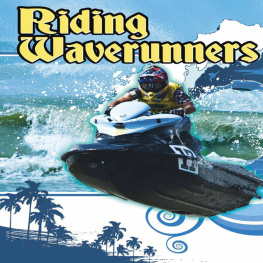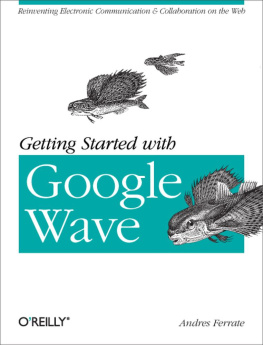Table of Contents
Guide

2010 Rourke Publishing LLC
All rights reserved. No part of this book may be reproduced or utilized in any form or by any means, electronic or mechanical including photocopying, recording, or by any information storage and retrieval system without permission in writing from the publisher.
www.rourkepublishing.com
PHOTO CREDITS: Scott Fichter:
Edited by Jeanne Sturm
Cover and Interior designed by Tara Raymo
Library of Congress Cataloging-in-Publication Data
Hicks, Kelli Shay.
Riding waverunners / Kelli Hicks.
p. cm. -- (Action sports)
Includes index.
ISBN 978-1-60694-360-1
1. Surfing--Juvenile literature. 2. Surfing--Equipment and supplies--Juvenile literature. I. Title.
GV839.55.H53 2009
797.37--dc22
2009013247
Printed in the USA
CG/CG

Post Office Box 643328 Vero Beach, Florida 32964
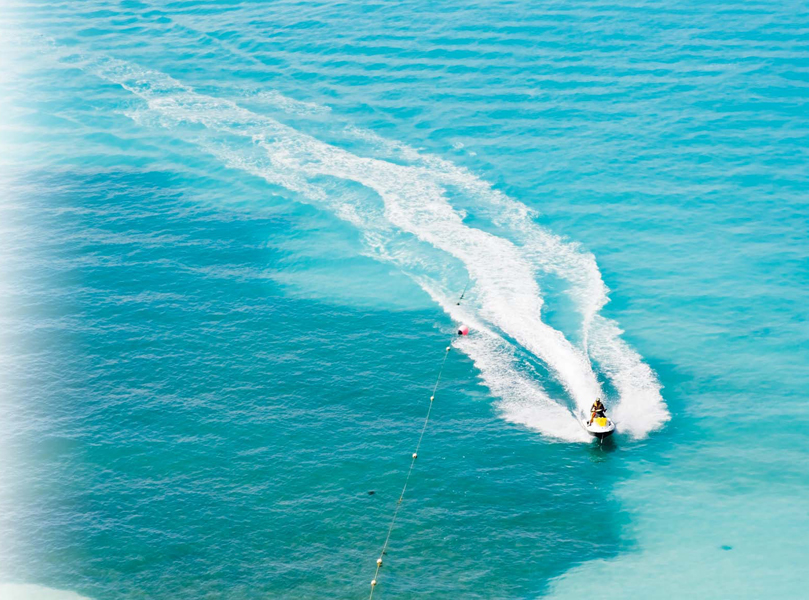
Are You Adventurous?
Turn the key and the starts to hum. Your heart is beating fast, your skin is tingling, and you cant wait to hit the water. You pump gas into the engine, and you move forward. As you pick up speed, the spray of water flies through the air and you feel exhilarated. Are you adventurous enough to ride a waverunner?
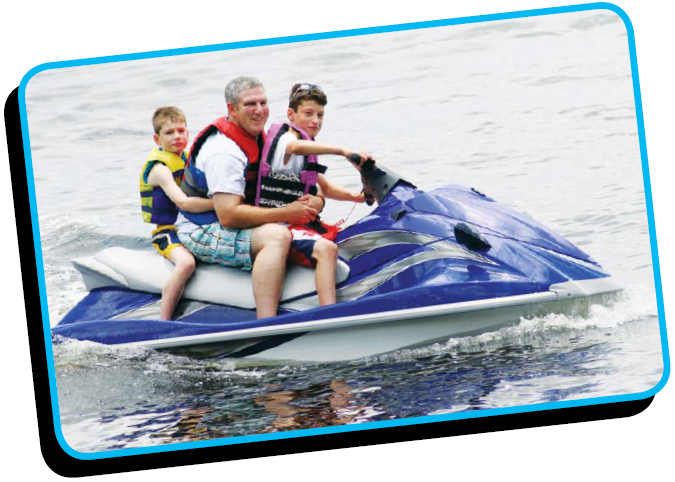
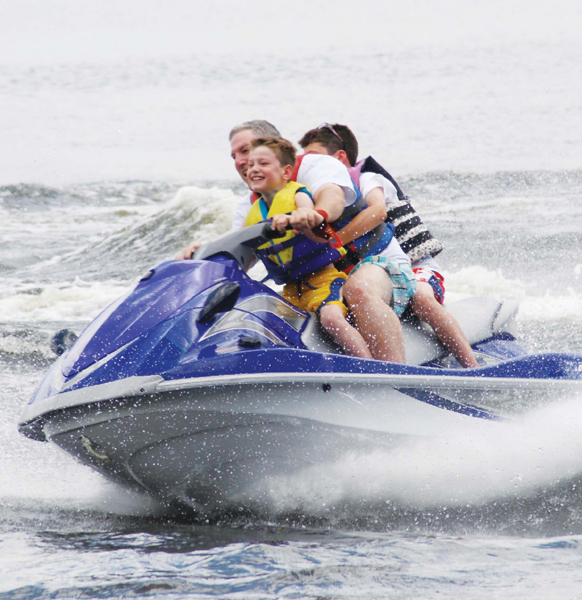
What is a Waverunner?
A waverunner is a personal watercraft (PWC). The Jet Ski and the Sea-Doo are also types of PWC. These are the brand names made by Yamaha, Kawasaki, and Bombardier. The term WaveRunner is the brand made by Yamaha, but the term has become a generic way to describe any PWC. A PWC is similar to a boat, except that a passenger sits or stands on the craft rather than riding inside it. Waverunners can move up to 60 miles per hour (95 kilometers per hour), depending on how much weight the machine is carrying.

History of the Waverunner
Waverunners evolved from stand-up machines, called Jet Skis. The design of the machine allowed one person to through the water in a standing position. Manufacturers introduced the Jet Ski to the public in the 1960s. Beginning in 1987, designers built sit-down models called waverunners that can handle two or three passengers at one time. Estimates show that more than 20 million Americans ride waverunners each year.
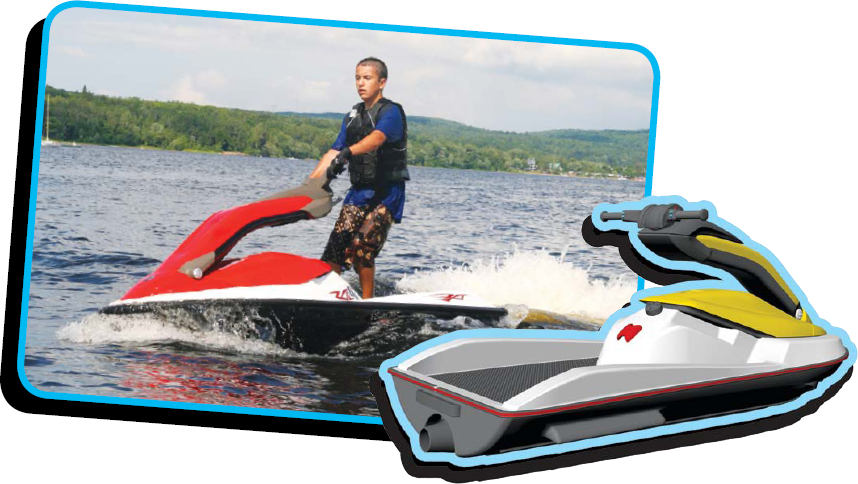
jet ski

waverunner
How Does It Work?
A waverunner needs power to work. Waverunners have engines that supply power to the craft. The engine is either a two-stroke or a four-stroke model. Most current models use a four-stroke engine as it is better for the environment and more efficient. The operator uses the to make the waverunner move faster in the water. To slow down, the driver will ease off the throttle. Unlike boats, waverunners do not have braking systems. Some models have technology installed that prevents the driver from driving too fast.
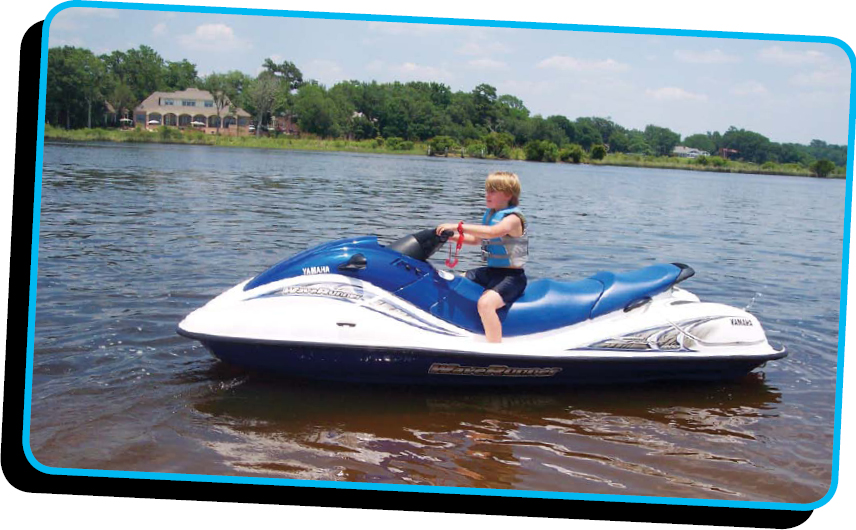
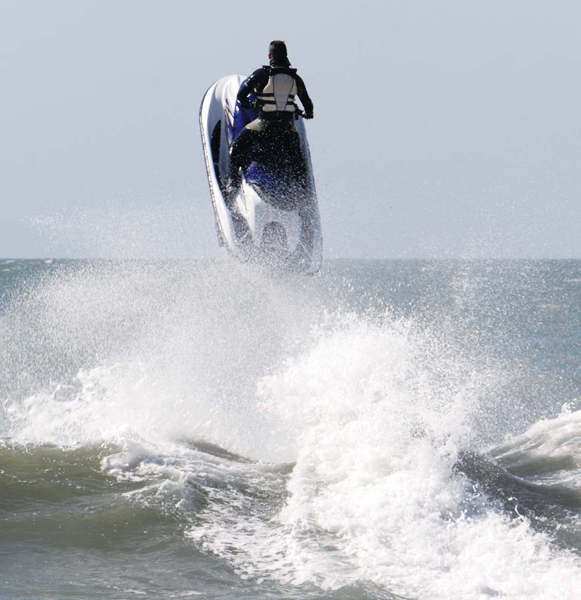
Did You Know?

German engineer Nikolaus Otto developed the first functioning four-cylinder engine.
Sometimes called the Otto Cycle, the name comes from a four-step system of movement of a piston in a cylinder. The piston begins at the top of the cylinder and moves down, reducing the pressure in the cylinder. Then, the valves close and air mixes with the fuel. A spark plug ignites the mixture and increases pressure, creating power. The piston pushes through the cylinder and creates exhaust.
Who Uses a Waverunner?
The most popular use for personal watercraft is for fun! Many popular vacation destinations include access to waverunners for their guests. Families can spend time together as they speed through the water.

Serious racers can win money or prizes in competition.
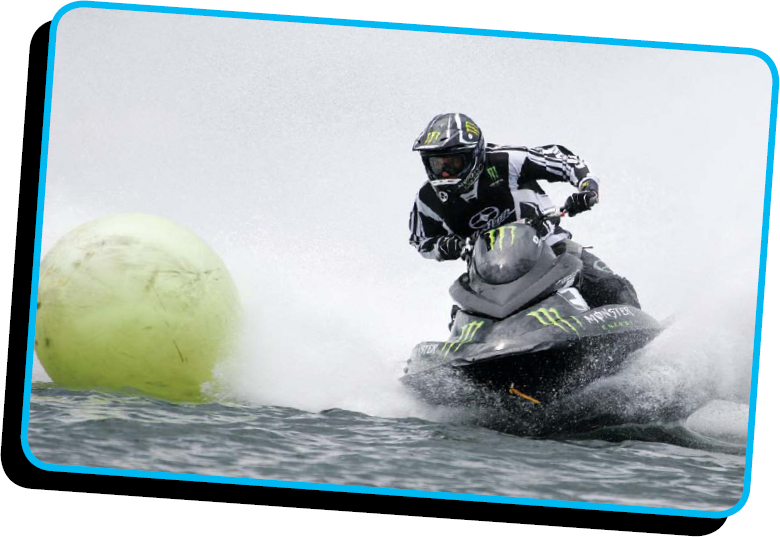
Some people compete in races and competitions. Some races determine which driver is the fastest. In a . It takes skill to move in and out of the buoys without driving over them. Some riders like to do tricks on their waverunners. A skilled driver can spin the waverunner in a trick called a 360. The waverunner spins in a circle a full 360 degrees and returns to the same direction where it began.
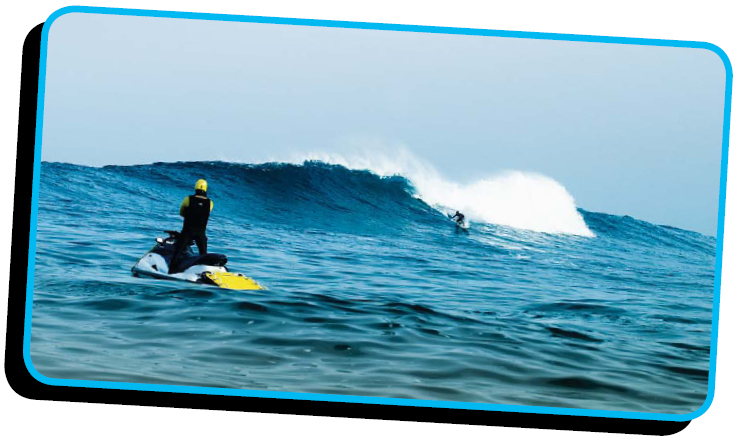
Sometimes, participants in other sports use waverunners for assistance. Some surfers use a waverunner to tow them further out into the surf than they would be able to go by paddling alone.
Lifeguards may use a waverunner with a platform on the back to assist with rescuing swimmers who are in trouble. The lifeguard can reach the swimmers quickly and easily, then place them on the platform, and return them safely to the beach.
Law enforcement officers use waverunners, which are easier to maneuver and safer for life than boats, to patrol lakes and rivers and ensure that people are following safety rules on the water.
When a lifeguard can place a troubled swimmer on the platform of his waverunner, he is left free to concentrate on quickly carrying the swimmer back to shore.
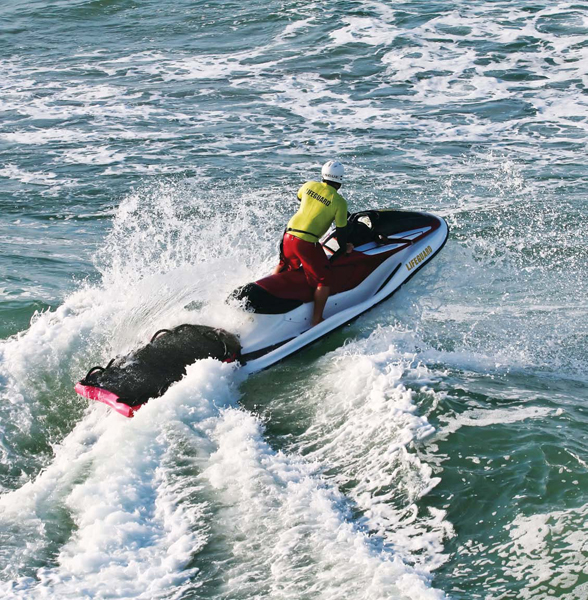
Scientists and researchers take waverunners out into the water to study marine animals and plants. They do not have external motors like boats, which makes them safer for the plant and animal life in the water.

Did You Know?

